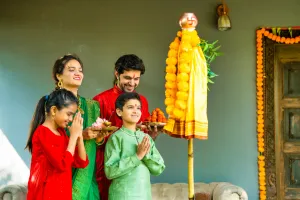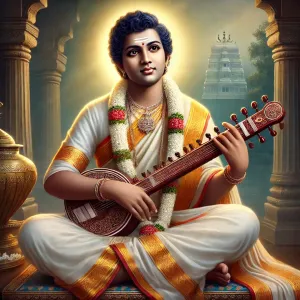Chaitra Navratri, one of Hinduism's most powerful spiritual celebrations, welcomes spring and the Hindu New Year from March 30 to April 7, 2025. Devotees worldwide pay homage to nine distinct forms of Goddess Durga - Navdurga. Each form embodies unique virtues and aspects of divine feminine energy.
This festival's spiritual significance runs deeper than its traditional roots and emphasizes eternal principles of devotion, discipline, and righteousness. Devotees purify their body and mind by fasting and eating only sattvic foods throughout these nine sacred days. Shree Ram Navami marks the festival's culmination and completes a spiritual cycle that represents light's victory over darkness and knowledge's triumph over ignorance.
Understanding the Spiritual Essence of Chaitra Navratri 2025
The spiritual foundations of Chaitra Navratri run deep in Hindu philosophy and cosmology. This nine-night festival stands apart from regular celebrations. The festival embodies profound cosmic principles that guide spiritual seekers toward inner change.
The Divine Significance behind the nine nights
Navratri, meaning "nine nights" in Sanskrit, symbolizes the victory of good over evil. Celebrated during the first nine days of the lunar cycle, it marks a time when feminine energy is believed to be at its highest. Each night connects to a goddess's different form, creating a meaningful spiritual trip.
The spiritual journey of Navratri unfolds in three distinct phases. The first three days are tamasic, the following three are rajasic, and the final three are sattvic. This structure shows creation's three basic qualities—tamas (inertia), rajas (activity), and sattva (purity). Devotees worship three main forms of the goddess during these phases: Durga for strength, Lakshmi for abundance, and Saraswati for wisdom.
How Chaitra Navratri is different from Sharadiya Navratri
Both Chaitra and Sharad Navratri celebrate the goddess, yet each holds a distinct spiritual significance. Chaitra Navratri, observed in spring (March–April), marks the beginning of the Hindu lunar year, while Sharad Navratri takes place in autumn (September–October).
Chaitra Navratri holds special significance with the arrival of spring and culminates in Shree Ram Navami, celebrating the birth of Shree Ram. In contrast, Sharad Navratri concludes with Vijayadashami, commemorating Goddess Durga’s triumph over Mahishasur.
Regional traditions add their own unique flavor. Chaitra Navratri is celebrated with great fervor in northern and western India, while Sharad Navratri sees nationwide participation, especially marked by elaborate Durga Puja festivities in eastern India.
The connection to spring and new beginnings
The timing of Chaitra Navratri in spring holds deep significance. This festival also coincides with regional New Year celebrations, such as Gudi Padwa in Maharashtra and Ugadi in the southern states. Spring represents nature's renewal and growth, matching devotees' spiritual refreshment through fasting, prayer, and meditation.
This sacred time gives devotees a chance to sync with nature's cycles. They can clear negative energy and start fresh spiritual beginnings with divine blessings.
The Nine Forms of Goddess Durga as Spiritual Guides
The nine forms of Goddess Durga worshiped during Chaitra Navratri are the foundations of a well-laid-out spiritual trip. Devotees connect with different aspects of divine energy across these nine nights. Each aspect guides their spiritual development uniquely.
Day 1-3: Durga aspects and foundation of spiritual strength
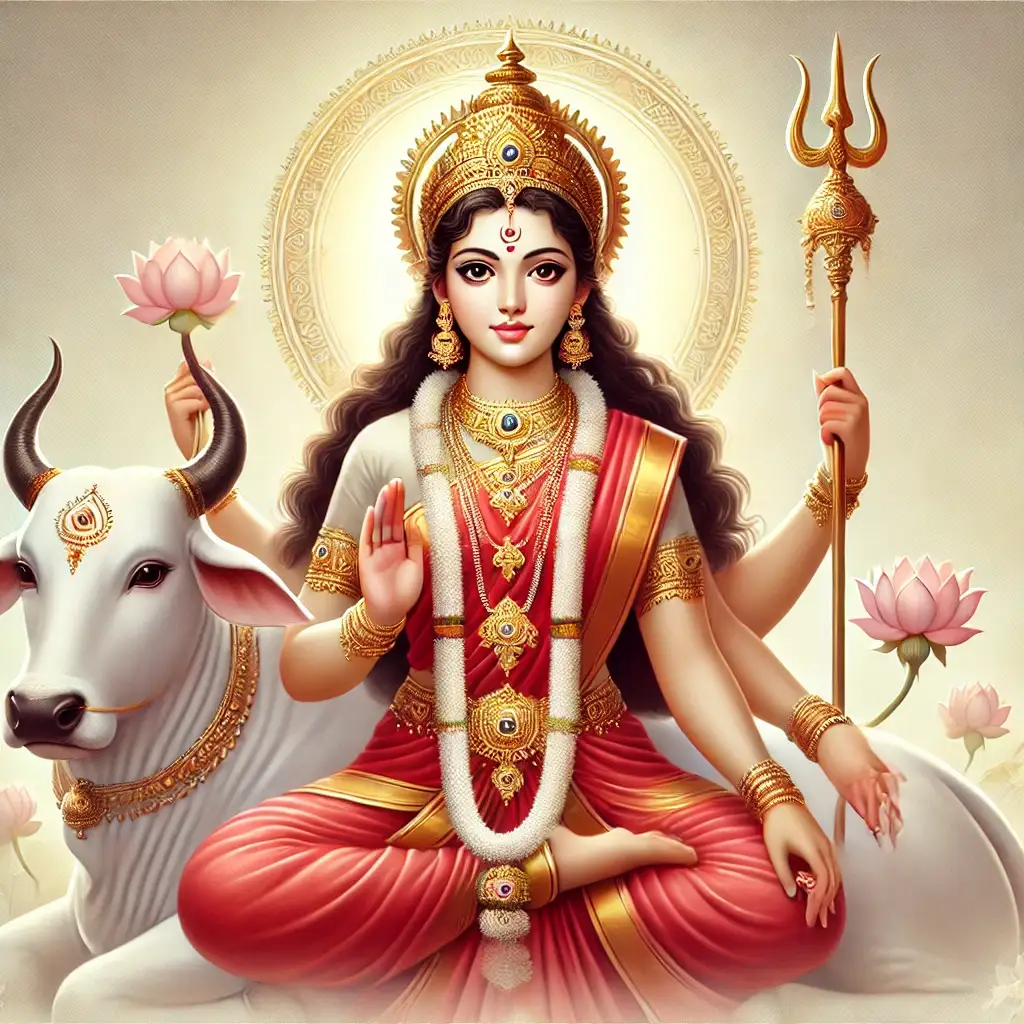
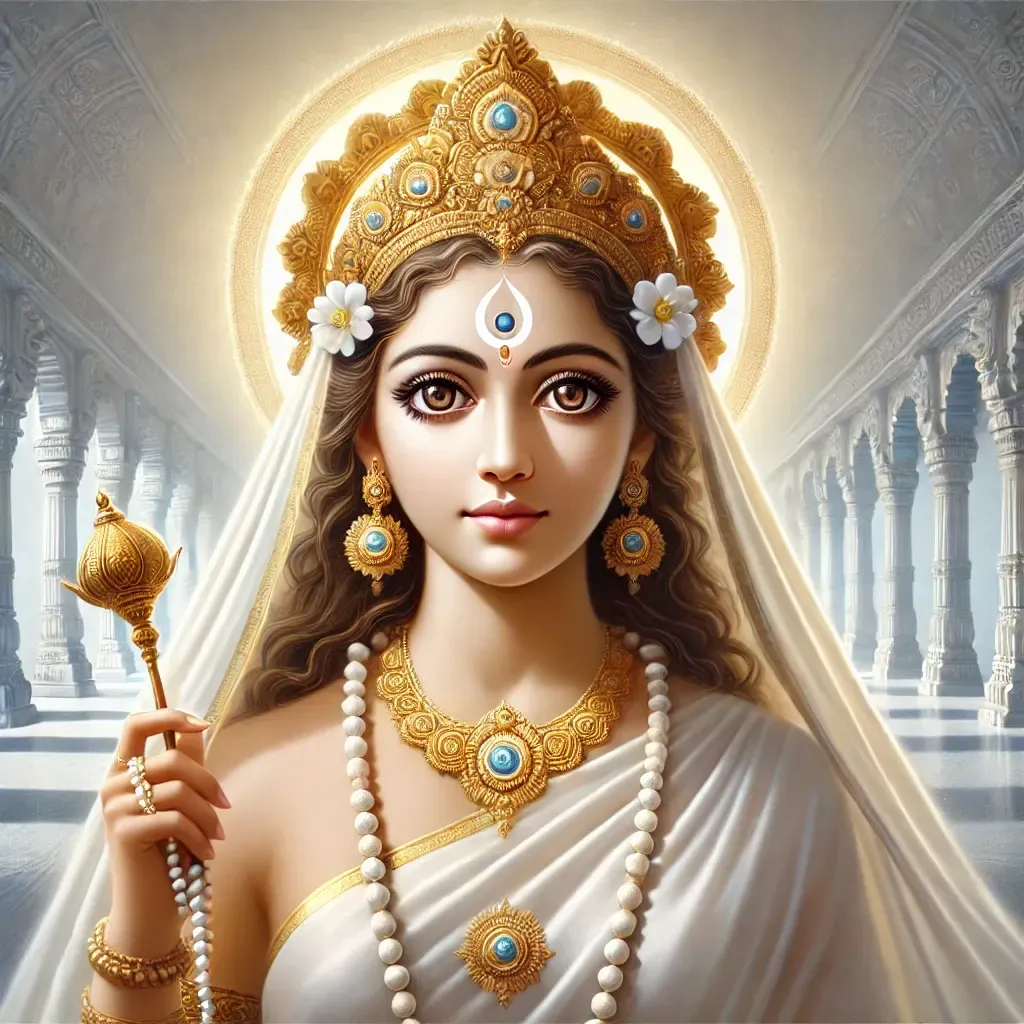
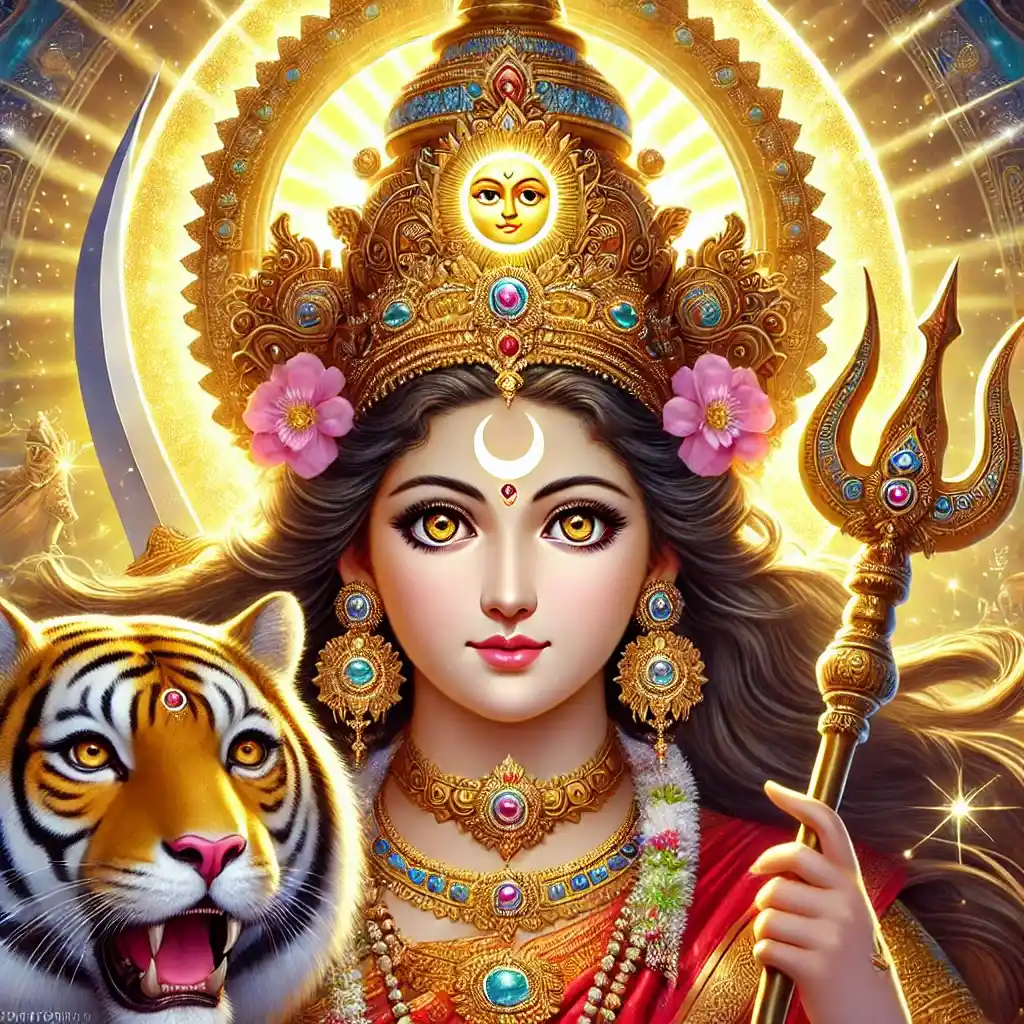
Shailaputri, Brahmacharini, and Chandraghanta—three divine forms of Maa Durga, each guiding us through strength, devotion, and courage as Navratri unfolds.
Chaitra Navratri's first three days focus on tamas-oriented Durga aspects that build spiritual strength. Devotees worship Shailputri (the daughter of mountains), Brahmacharini (the ascetic form), and Chandraghanta (the fierce warrior goddess). These forms work together to remove negativity and obstacles while fostering courage.
Each goddess's specific offerings help improve spiritual connection. Pure ghee symbolizes purification for Shailputri. Sugar represents sweetness in ascetic discipline for Brahmacharini. Kheer signifies rewards of persistence for Chandraghanta.
Day 4-6: Lakshmi aspects and abundance consciousness
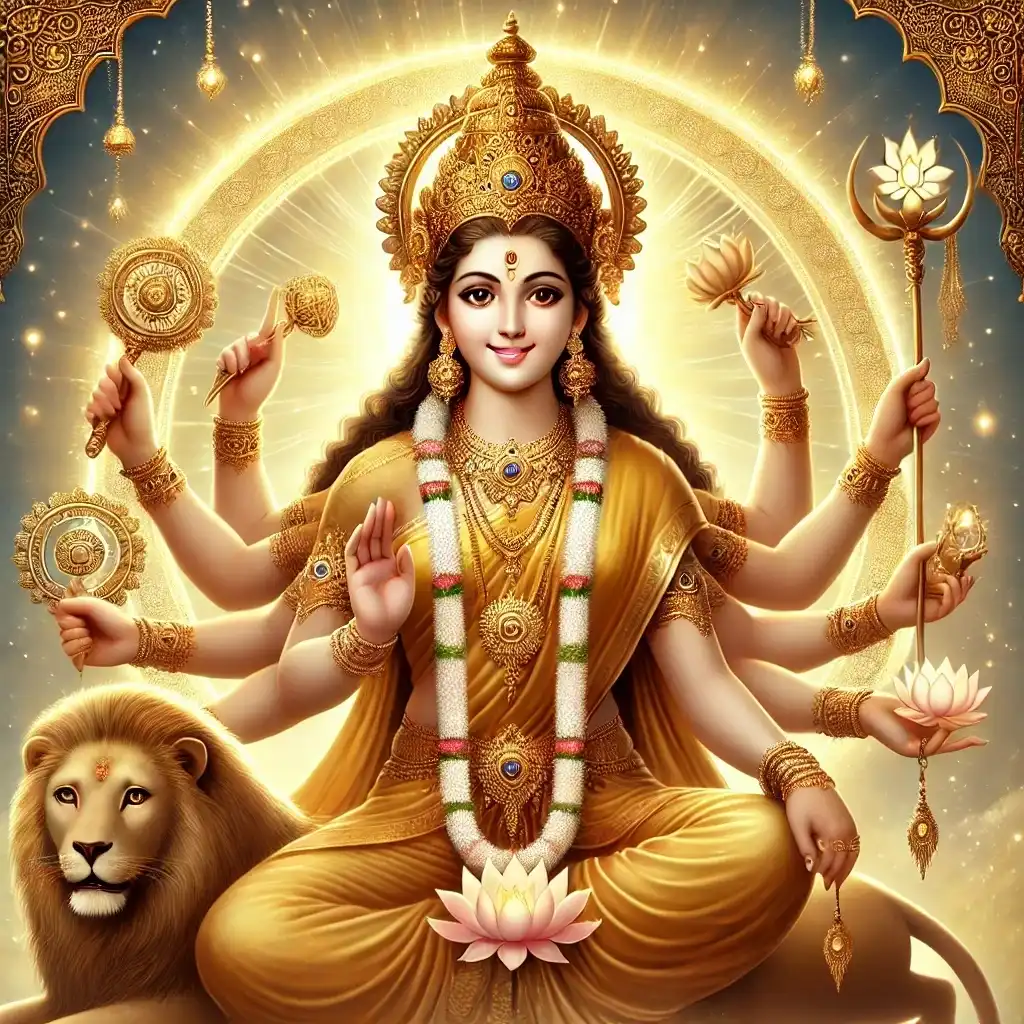
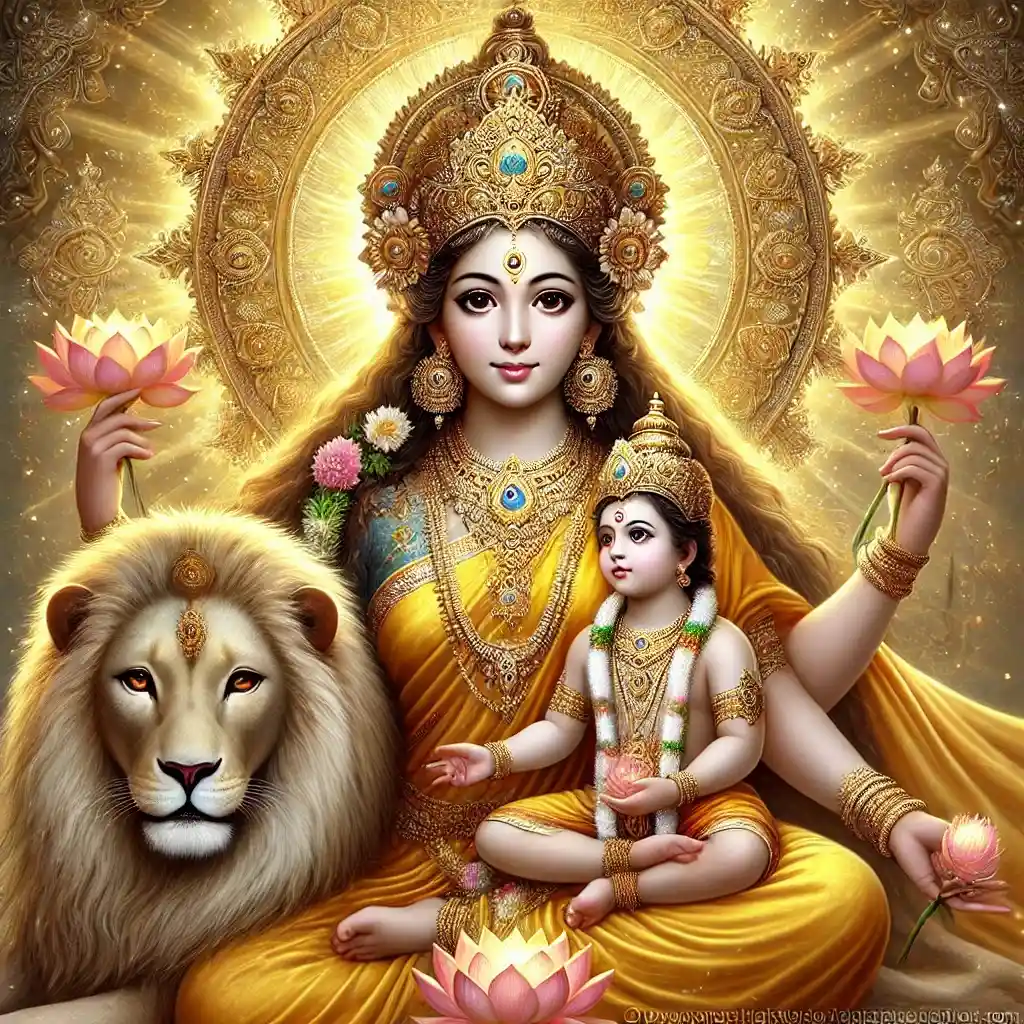

Kushmanda’s light, Skandamata’s love, and Katyayani’s strength—three sacred steps in the journey of Navadurga, guiding creation, devotion, and divine courage.
The middle three days shift to rajasic qualities through worship of Kushmanda (the cosmic creator), Skandamata (mother of Kartikeya), and Katyayani (the warrior form). These manifestations help us learn about abundance beyond material wealth.
"Rajasic days activate our creative energies and passion," notes a Hindu scholar. This phase builds on the strength from earlier days and channels that power into productive activities and noble values. The prasad offerings reflect this shift naturally. Malpua improves intellect for Kushmanda. Bananas symbolize fertility for Skandamata. Honey represents devotion's sweetness for Katyayani.
Day 7-9: Saraswati aspects and wisdom cultivation
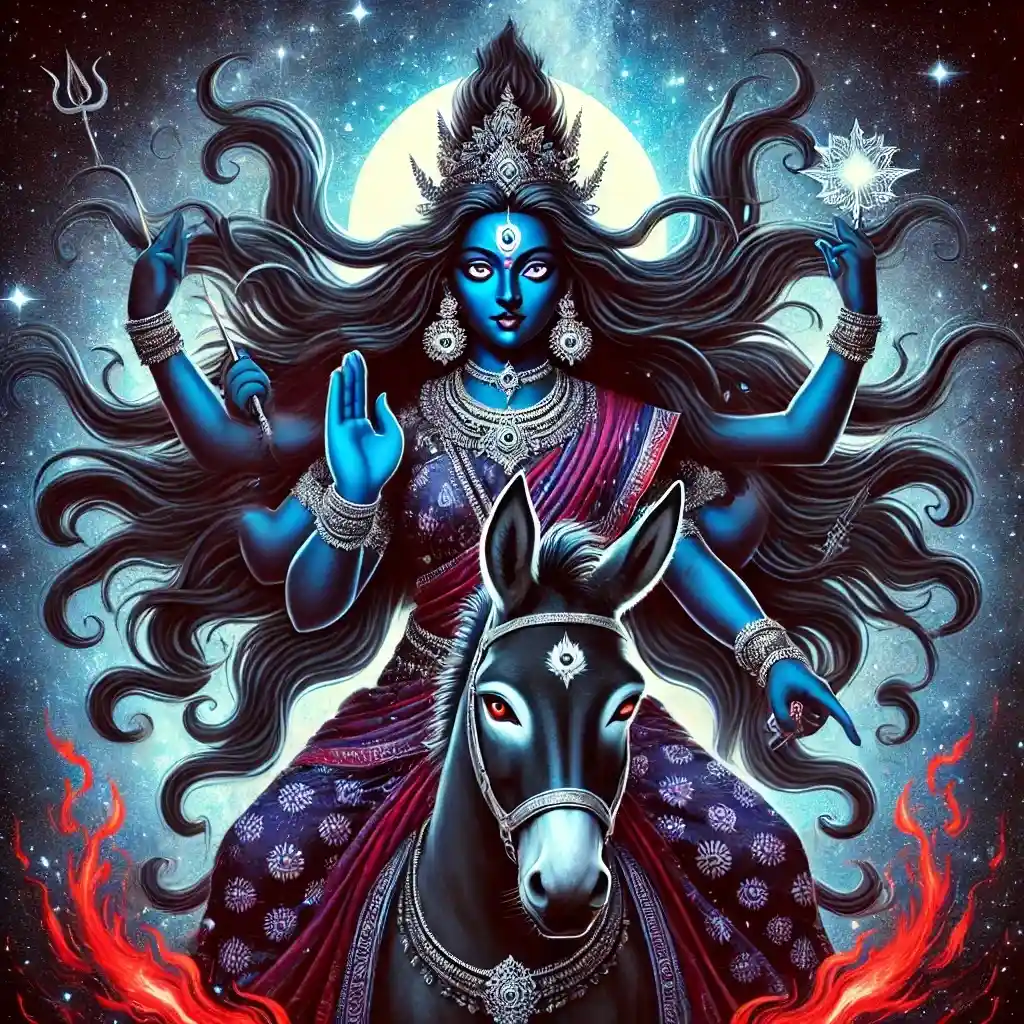
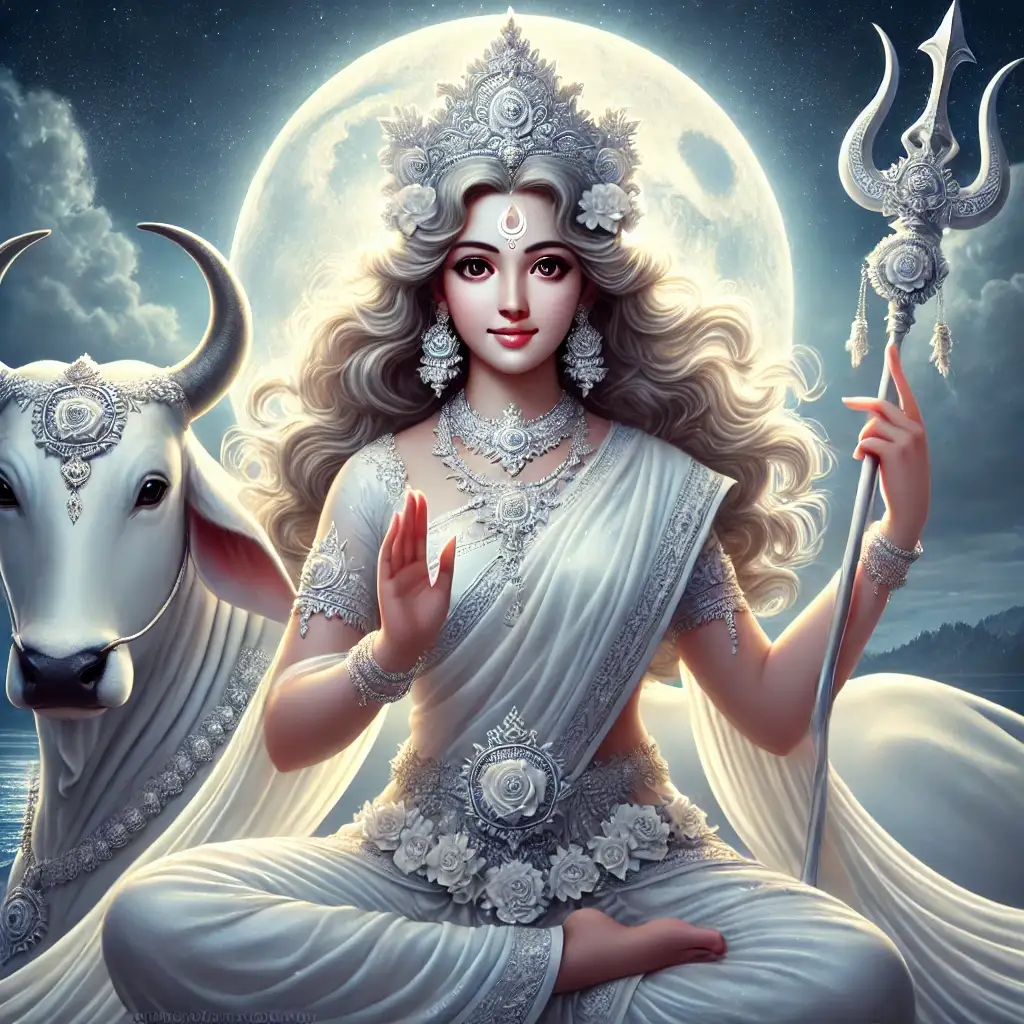
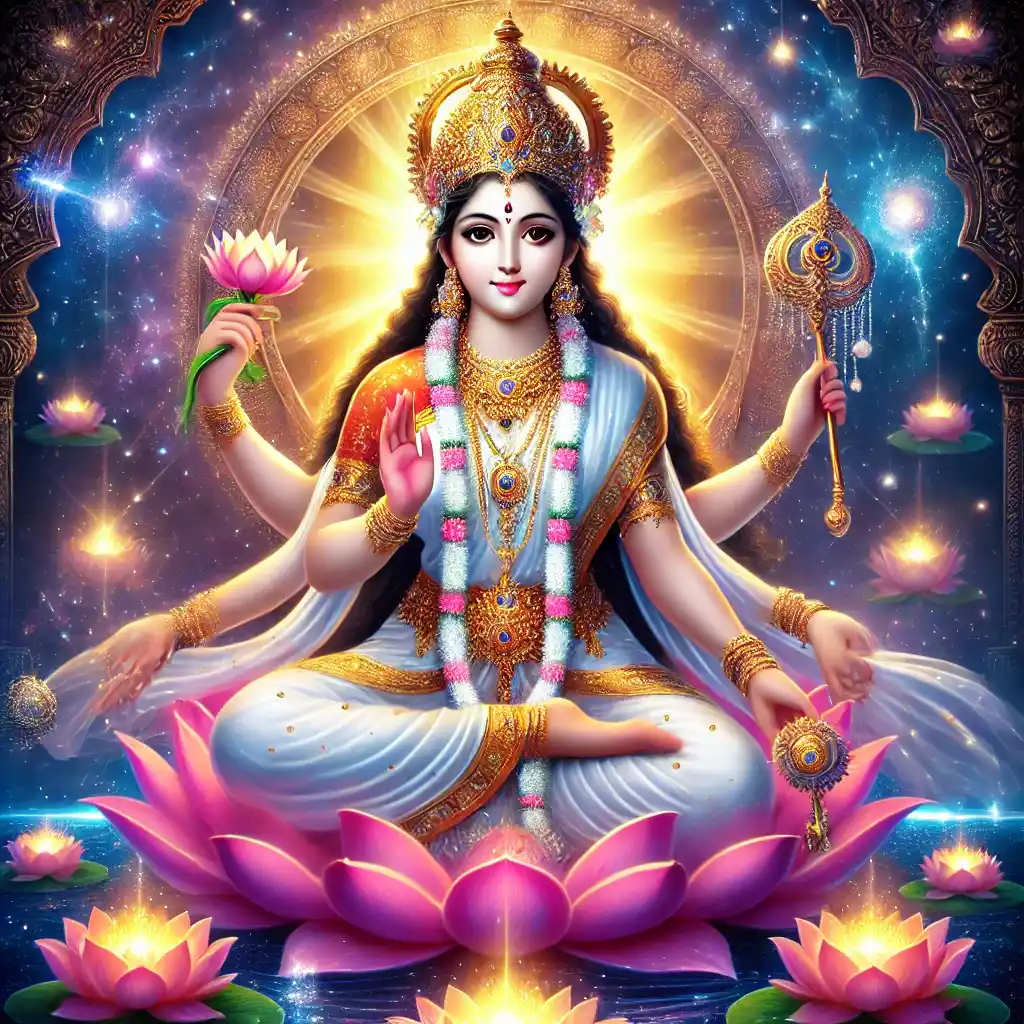
Kaalratri, Mahagauri, and Siddhidatri—Shakti’s final forms that burn away fear, bring inner peace, and bless the soul with divine fulfillment.
The final three sattvic days lift consciousness through worship of Kalaratri (the dark goddess), Mahagauri (the fair goddess), and Siddhidatri (bestower of perfection). These forms refine spiritual understanding and grant wisdom.
This progression mirrors our inner spiritual trip. We first clear negativity, then foster positive virtues, and finally reach enlightenment. These nine forms stand out because they represent the complete cycle of spiritual growth. The journey from purification to perfection provides a practical framework for personal transformation during Chaitra Navratri 2025.
Daily Rituals and Their Impact on Spiritual Growth
Rituals make up the heart of Chaitra Navratri. They provide a well-laid-out path to spiritual transformation. These nine sacred days let devotees take part in specific morning and evening practices that raise consciousness and promote a divine connection.
Morning practices for spiritual awakening
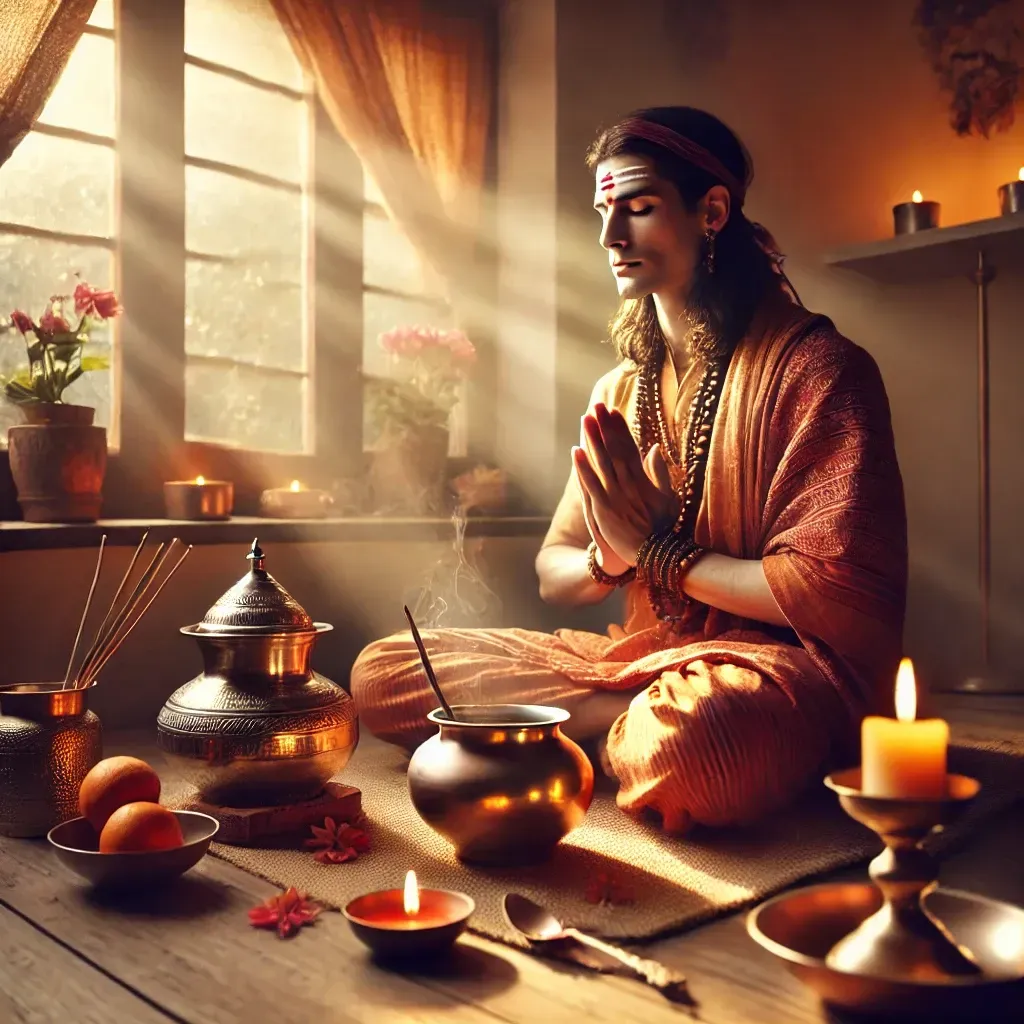
Each day of Navratri begins with a “Sankalp” — the setting of a clear intention — a powerful ritual that enhances spiritual energy throughout the festival. Renowned astrologer Dr. Sundeep Kochar highlights that “during this time, the power of thought and intention is significantly heightened.” Devotees begin their day with a cleansing bath, followed by prayers and mantra chanting to connect with Goddess Durga.
Fasting is a central part of the morning rituals, aimed at cleansing both body and soul. Rooted in traditional wisdom, it goes beyond mere dietary restraint—serving as a practice of both physical detox and spiritual purification. Practitioners choose different fasting levels. Some completely abstain from food, while others follow fruit-based diets or single meals. This creates room for spiritual awareness to grow.
Evening worship and its significance
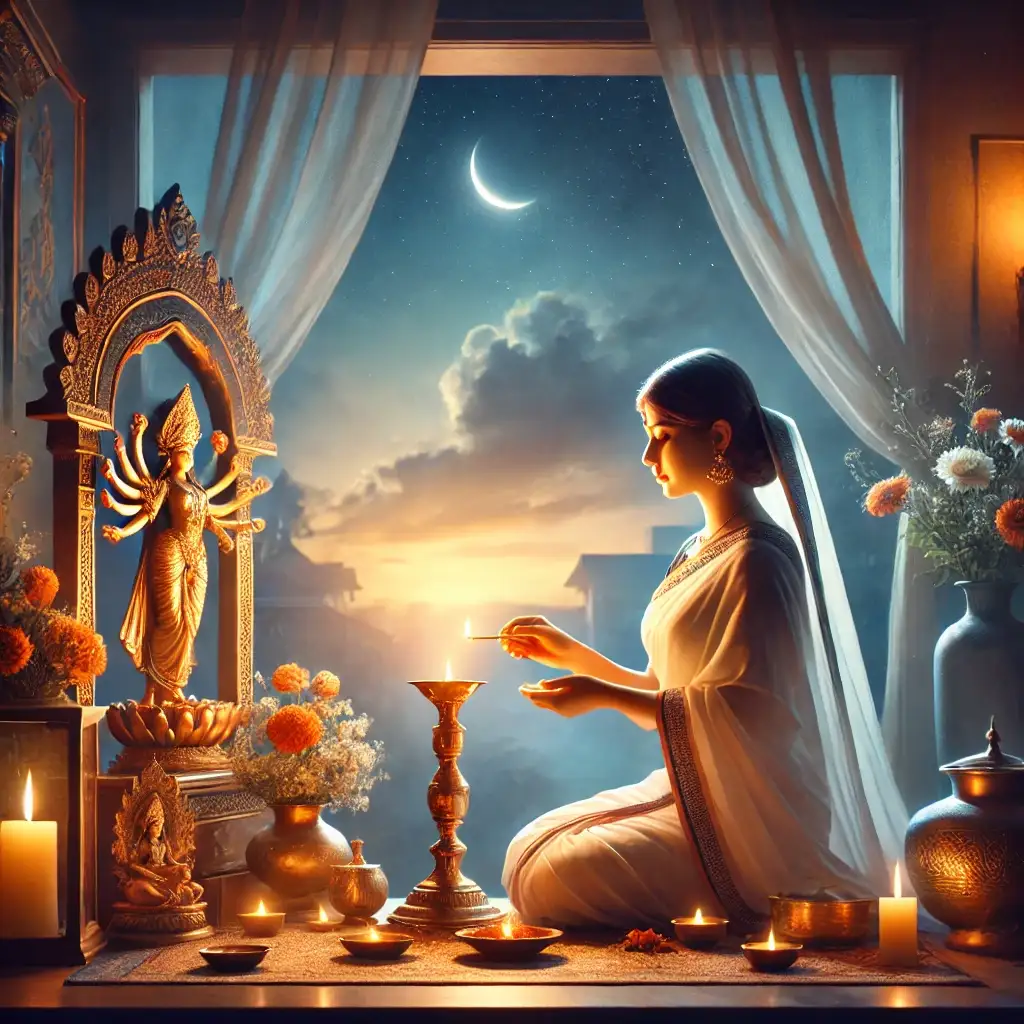
Evening rituals take on a deeper significance as twilight sets in. Lighting a diya (lamp) each night is more than a tradition—it represents the eternal presence of Goddess Durga, with the steady flame symbolizing her constant divine energy. This moment coincides with "Sandhi Kal"—the twilight period regarded as a gateway to elevated states of consciousness.
Evening aarti with bhajan creates positive energy that cleanses the atmosphere. Many households place flowers, incense, and special offerings before the goddess as signs of gratitude and devotion. These evening practices help people move from active daytime awareness to quiet evening reflection.
The power of consistent devotion during Navratri 2025
Regular practice through all nine days builds spiritual momentum. Each day adds to the spiritual foundation of previous days, starting a journey toward enlightenment. Ancient scriptures indicate that practicing Sri Vidya during this sacred period helps individuals balance their inner energies and attune themselves to the rhythm of the cosmos.
Daily devotional practices lead to gradual inner transformation. The disciplined routine of prayer, fasting, and worship during Chaitra Navratri 2025 helps develop self-control, clarity, and spiritual receptivity. This prepares devotees for the final day of Shree Ram Navami. These nine days of steady spiritual practice leave lasting positive marks on one's consciousness.
Connecting Chaitra Navratri to Shree Ram Navami: The Complete Spiritual Cycle
The deep connection between Chaitra Navratri and Shree Ram Navami creates a complete cosmic cycle in Hindu spirituality. This carefully planned progression from Goddess worship to celebrating Shree Ram's birth reveals the comprehensive nature of Hindu spiritual practice.
Why the festival ends with Shree Ram's birth
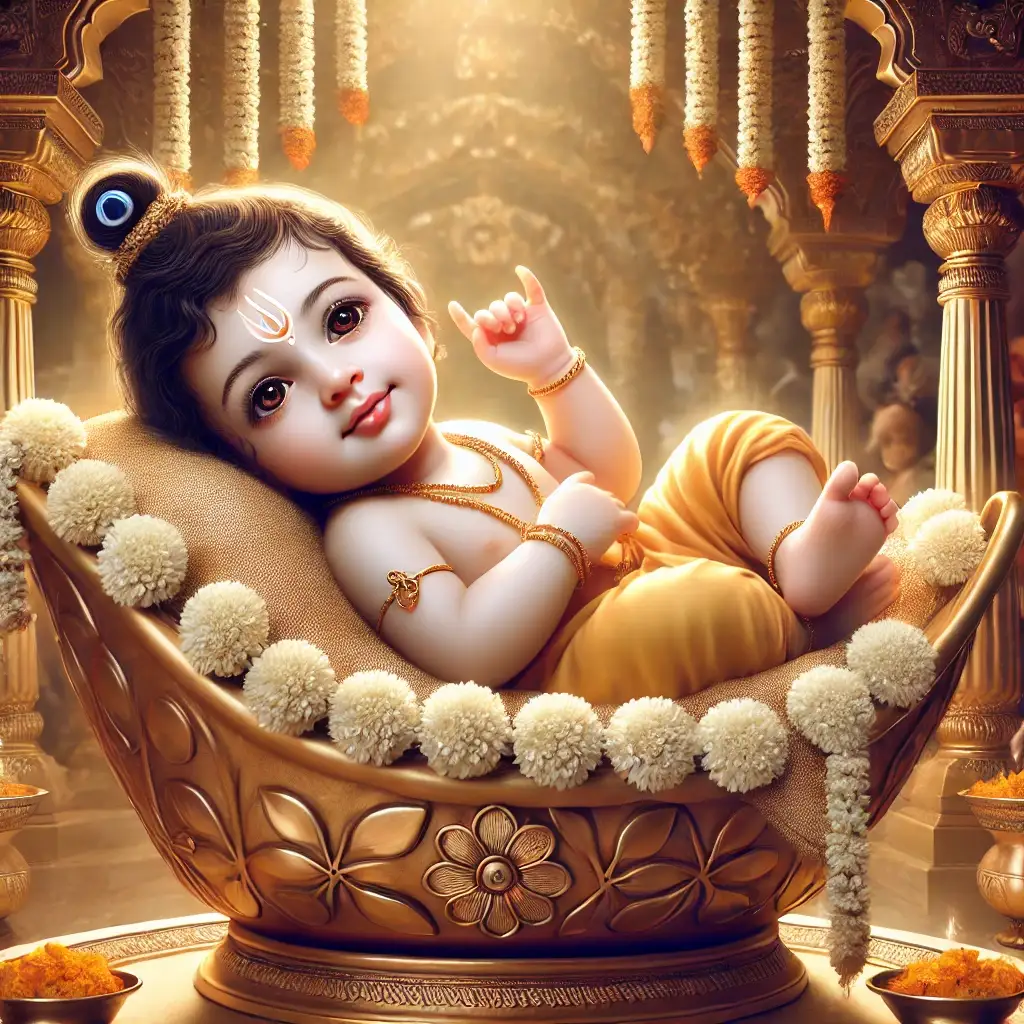
Shree Ram Navami, observed on April 6, 2025, concludes the Chaitra Navratri festivities by commemorating the birth of Shree Ram on Navami Tithi, the ninth day. This synchronicity reflects a carefully planned spiritual design. Devotees progressively purify themselves through goddess worship and prepare their consciousness for Shree Ram's divine virtues during the nine-day celebration.
Experiencing the nine forms of Durga gradually cultivates qualities that are beautifully reflected in the character of Shree Ram. As one scholar puts it, “The Goddess grants us inner strength, and Shree Ram shows us how to embody it in life.” This connection shows how the feminine divine energy enables the demonstration of dharma (righteousness).
Integrating feminine and masculine divine energies
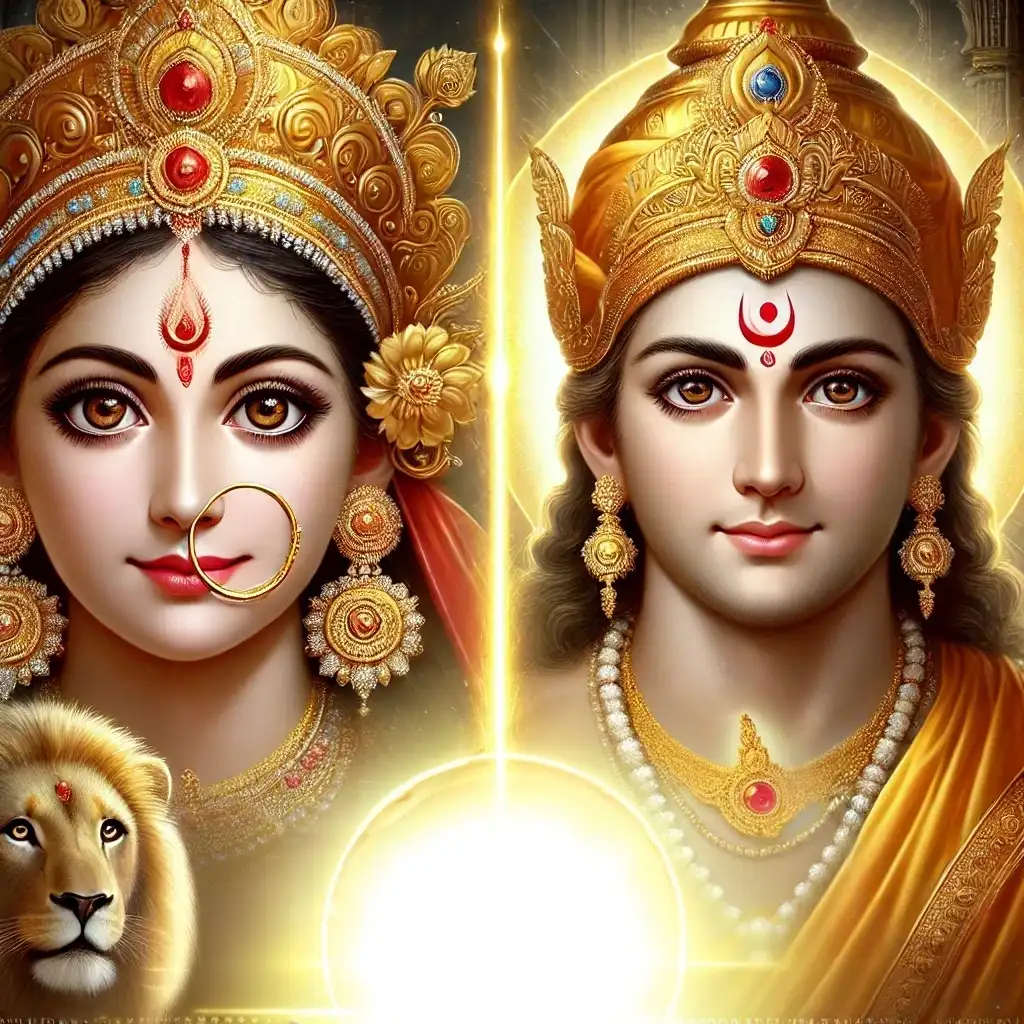
The divine feminine and masculine principles work as complementary forces despite their distinct appearances. The nine nights of Navratri represent the feminine principle (Shakti) and focus on energy, creation, and transformation. Shree Ram Navami celebrates the masculine divine (Dharma) and embodies order, protection, and righteous conduct.
Ancient scriptures emphasize this connection by recounting how Shree Ram offered Durga Stuti—prayers to Goddess Durga—before his battle with Ravan. This shows how even "Vishnu's avatar bows to Maa Durga," suggesting that strength comes from harmonizing these complementary energies.
The spiritual significance of this sacred timing
Spring's sacred cycle carries deeper meaning. Nature awakens with new life while the spiritual seeker experiences progressive awakening through Navratri leading to Shree Ram Navami. This period creates a template for spiritual development by moving from shakti (power) to dharma (righteous action).
The complete cycle offers more than religious observance. It provides a practical framework to integrate power with purpose, energy with direction, and spiritual awakening with righteous living.
Modern Applications of Navratri Wisdom for Today's Spiritual Seekers
Ancient Navratri wisdom offers spiritual rejuvenation to modern seekers in our ever-changing world. The nine-day celebration's timeless principles naturally blend into contemporary lifestyles. These practical tools support inner growth, whatever your busy schedule might be.
Practical ways to incorporate Navratri colors into daily life

Chaitra Navratri's nine colors carry psychological and spiritual significance beyond festival days. Specific energies strike a chord with each color—orange represents enthusiasm, white symbolizes peace, and royal blue embodies tranquility. Studies show these colors can affect mental health positively. Yellow boosts optimism while green promotes emotional balance.
Your wardrobe can strategically include these colors during challenging times—red for confidence or green for balance. Living spaces become more energized with color accents through flowers, decorations, or simple items like cushions that help develop specific energies. Mindful reminders of spiritual qualities appear throughout your day with colored phone wallpapers or accessories.
RoopDhyan meditation techniques for spiritual alignment
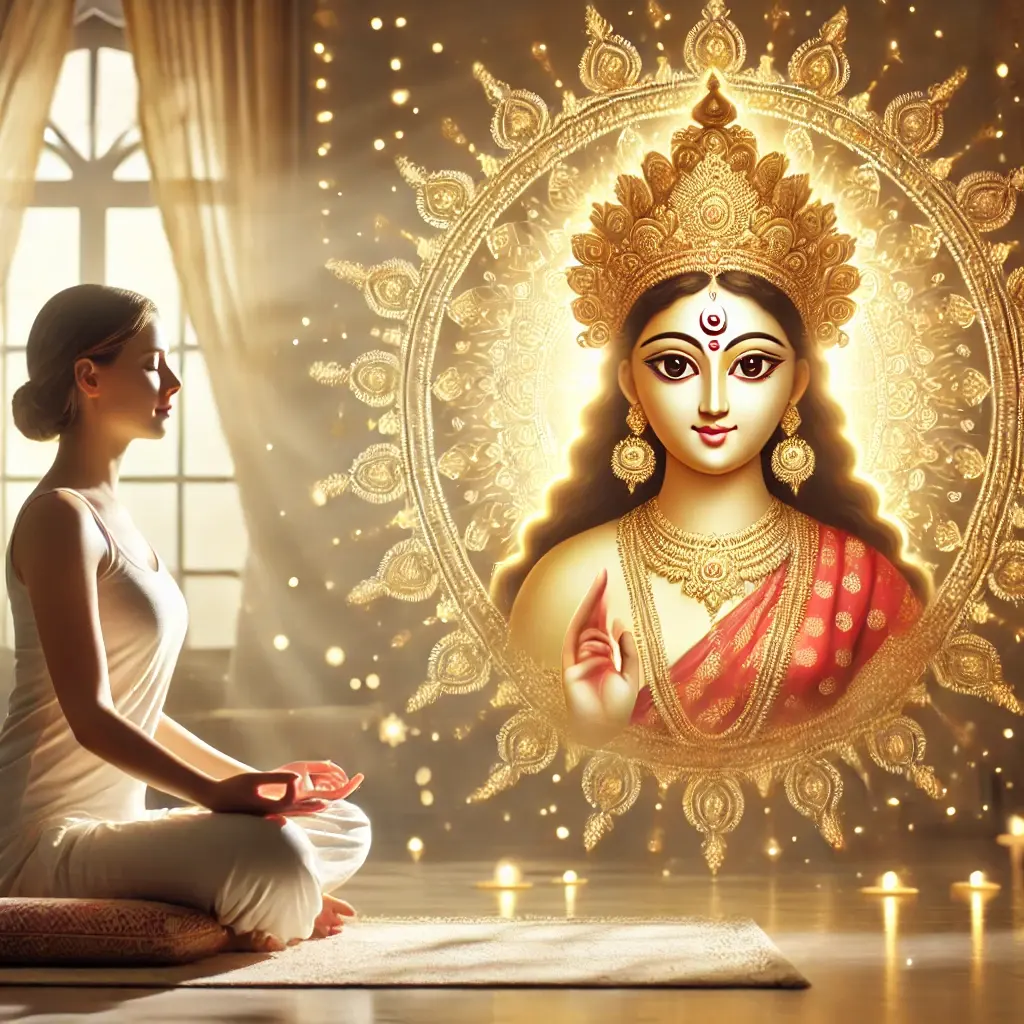
RoopDhyan gives modern practitioners a structured approach to spiritual connection through powerful visualization meditation. "Roop means form and dhyan means to meditate upon," explains JKYog Academy's meditation guide. This technique purifies the mind by connecting it with divine imagery, unlike conventional meditation that focuses only on concentration.
Practitioners visualize divine forms, attributes, or leelas (divine play) during this practice. They might picture Radha-Krishna's form, contemplate divine virtues flowing into themselves, or imagine offering service. Beginners can now access this ancient technique through guided meditation here.
Adapting traditional practices for busy lifestyles

Professionals can blend Navratri practices into their schedules smoothly. Intermittent fasting or avoiding processed foods can replace extended fasting. "Small, frequent meals every 3-4 hours helps maintain stable blood sugar levels, preventing sudden dips in energy," suggests one wellness article.
Brief meditation breaks can replace lengthy rituals throughout workdays with phone reminders for spiritual connection. Quality matters more than quantity in spiritual practices, and the essence of Navratri shines through intention rather than duration.
Using Navratri as a reset for mental and emotional well-being

Chaitra Navratri provides a perfect framework for mental and emotional detoxification. Nine days guide practitioners through a progressive cleansing process naturally. The goddess transitions from fierce forms to peaceful ones, helping practitioners process challenging emotions and develop inner calm.
Journaling helps release negative thought patterns and develop positive qualities. Traditional focus on self-transformation and conscious progress aligns well with modern psychological approaches.
Creating community through shared spiritual celebration

Technology enables shared Navratri experiences across geographical distances. Virtual satsangs, online garba nights, and digital prayer circles connect people across borders.
Chaitra Navratri's ancient wisdom remains relevant today, offering practical tools for spiritual growth in contemporary contexts.
Conclusion
Chaitra Navratri provides seekers a well-laid-out path to spiritual consciousness during its nine-day trip. The progressive worship of Navdurga and celebration of Shree Ram Navami work together as tools that transform spiritual growth.
This sacred festival's wisdom goes beyond religious boundaries. It gives modern spiritual seekers practical ways to grow. Practitioners can get deep spiritual benefits through color therapy, adapted fasting, and simple meditation techniques while they handle their daily responsibilities.
The celebration brings lasting positive changes through devoted practice and structured spirituality. Devotees who adopt both traditional and modern versions of Navratri rituals report better mental clarity, emotional balance, and spiritual connection.
Join Us for Chaitra Navratri & Ram Navami Celebrations
Radha Krishna Temple of Dallas | March 29 – April 6, 2025
Immerse yourself in devotion and spiritual elevation at the Radha Krishna Temple of Dallas as we celebrate Chaitra Navratri and the divine birth of Shree Ram during Ram Navami. This sacred 10-day festival offers a rare opportunity to align with cosmic energies and invite divine blessings for the New Year.
✨ Festival Highlights:
- Daily Durga Path & Archana to honor the nine forms of Goddess Durga
- Sri Vidya Sadhana & Homam: Deep spiritual practices for inner transformation
- Evening Discourses by spiritual teachers to inspire and uplift
- Ram Janmotsav (April 6, 2025): Celebrate Lord Ram’s birth with
- Ram Leela (dramatic reenactment of Ram’s life)
- Abhishekam, Kirtans, and Midday Maha Aarti
- Ram Navami Mahaprasad for all attendees
- Opportunities to sponsor Homam, Archana, and Abhishekam
- Participate in person or online from anywhere in the world
🪔 Free Registration & Details:
www.radhakrishnatemple.net/chaitra-navratri
Celebrate this auspicious season with faith, devotion, and joy.
Let the divine energy of Navratri and Ram Navami transform your life!
FAQs
Q1. What makes Chaitra Navratri spiritually significant?
Chaitra Navratri marks the beginning of the Hindu new year and spring season, symbolizing new beginnings and spiritual renewal. It's a nine-day period dedicated to worshiping Goddess Durga's nine forms, believed to bestow blessings and help devotees overcome obstacles in their spiritual journey.
Q2. How does Chaitra Navratri differ from other Navratri celebrations?
Chaitra Navratri occurs in spring (March-April) and culminates with Shree Ram Navami, celebrating Shree Ram's birth. It's more prominently observed in northern and western India, while the autumn Sharad Navratri sees nationwide participation with elaborate Durga Puja celebrations, especially in eastern India.
Q3. What is the spiritual progression during the nine days of Navratri?
The nine days follow a deliberate spiritual progression divided into three phases: the first three days focus on Durga aspects for spiritual strength, the next three on Lakshmi aspects for abundance consciousness, and the final three on Saraswati aspects for wisdom cultivation.
Q4. How can modern spiritual seekers incorporate Navratri practices into their daily lives?
Modern seekers can adapt Navratri practices by incorporating short meditation breaks, adopting modified fasting routines, and using the nine-day period for mental and emotional detoxification. Virtual satsangs and online cultural programs also allow for community celebration despite busy schedules.
Q5. Why does Chaitra Navratri culminate with Shree Ram Navami?
The culmination of Chaitra Navratri with Shree Ram Navami represents the integration of divine feminine and masculine energies. It symbolizes how the strength gained through goddess worship during Navratri empowers the manifestation of dharma (righteousness) as embodied by Shree Ram, creating a complete spiritual cycle.


